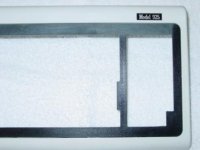I have a Beige unit and the keys are more gray than those that you've given the 3 day bath to in post #59.
I'm wondering if they had 'soaked' maybe too long. Perhaps 1 or 2 days would have left them a bit grayer and saved some of the fading of the letters on the keys.
Just thinking out loud here
I'm wondering if they had 'soaked' maybe too long. Perhaps 1 or 2 days would have left them a bit grayer and saved some of the fading of the letters on the keys.
Just thinking out loud here

